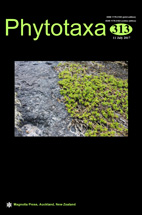Abstract
One new fern species, Polystichum luteoviride, a member of P. subg. Haplopolystichum (Dryopteridaceae), is described and illustrated from Guizhou Province in Southwest China. Polystichum luteoviride is similar to P. deflexum Ching ex W.M.Chu (1992: 47) in having crenate pinna margins, but the former has lamina yellowish green and pinnae oblong, strongly reflexed, and acute to obtuse at apex, while the latter has laminae green and pinnae lanceolate, slightly reflexed or even angled acroscopically, and acuminate at apex. Polystichum luteoviride was found inside a karst cave at an elevation of 1200 m with humid and shady conditions and is currently known from one population in Ziyun County, southern Guizhou, and is classified as Critically Endangered (CR) following IUCN Red List criteria.

